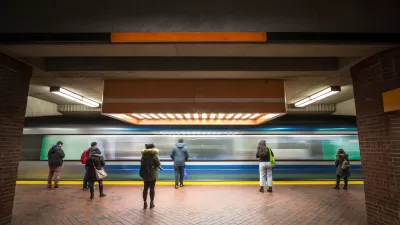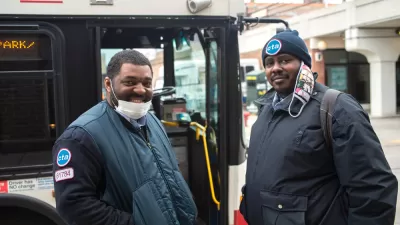Facing severe staffing shortages and high rates of burnout, transit agencies must improve their human resources departments and create healthier work environments to address current lapses in service.

A new report highlights major human resources shortcomings at transit agencies around the country that extend far beyond bus and train operator shortages to administrative and white-collar transit jobs, writes Kea Wilson in Streetsblog USA. “In a follow up to their much-discussed report on the national bus and train operator shortage, researchers at Transit Center dug into the structural factors behind the troubling ‘lack of people power’ happening at virtually every level of agency operations.”
Poor working conditions are driving many workers away, and almost half of workers are over the age of 55 and approaching retirement. “And even as agencies step up to help struggling riders with nowhere else to go and fix broken systems they didn't create, they're not always given extra resources to do it; they just stretch their budgets, and themselves, thinner and thinner,” Wilson adds.
Laurel Paget-Seekins, the primary author of the report, says this “cycle of exhaustion isn’t inevitable,” but that transit agencies must boost funding and resources for their HR departments and build a “strong foundation without which the sustainable transportation ecosystem can't possibly be expected to thrive, and without which many agencies are struggling to simply survive.”
FULL STORY: To Make Transit Work, We Need to Make Transit Agencies Better Workplaces

Planetizen Federal Action Tracker
A weekly monitor of how Trump’s orders and actions are impacting planners and planning in America.

DARTSpace Platform Streamlines Dallas TOD Application Process
The Dallas transit agency hopes a shorter permitting timeline will boost transit-oriented development around rail stations.

Congressman Proposes Bill to Rename DC Metro “Trump Train”
The Make Autorail Great Again Act would withhold federal funding to the system until the Washington Metropolitan Area Transit Authority (WMATA), rebrands as the Washington Metropolitan Authority for Greater Access (WMAGA).

Supreme Court Ruling in Pipeline Case Guts Federal Environmental Law
The decision limits the scope of a federal law that mandates extensive environmental impact reviews of energy, infrastructure, and transportation projects.

Texas State Bills to Defund Dallas Transit Die
DART would have seen a 30% service cut, $230M annual losses had the bills survived.

Bikeshare for the Win: Team Pedals to London Cricket Match, Beats Rivals Stuck in Traffic
While their opponents sat in gridlock, England's national cricket team hopped Lime bikes, riding to a 3-0 victory.
Urban Design for Planners 1: Software Tools
This six-course series explores essential urban design concepts using open source software and equips planners with the tools they need to participate fully in the urban design process.
Planning for Universal Design
Learn the tools for implementing Universal Design in planning regulations.
City of Mt Shasta
City of Camden Redevelopment Agency
City of Astoria
Transportation Research & Education Center (TREC) at Portland State University
US High Speed Rail Association
City of Camden Redevelopment Agency
Municipality of Princeton (NJ)




























